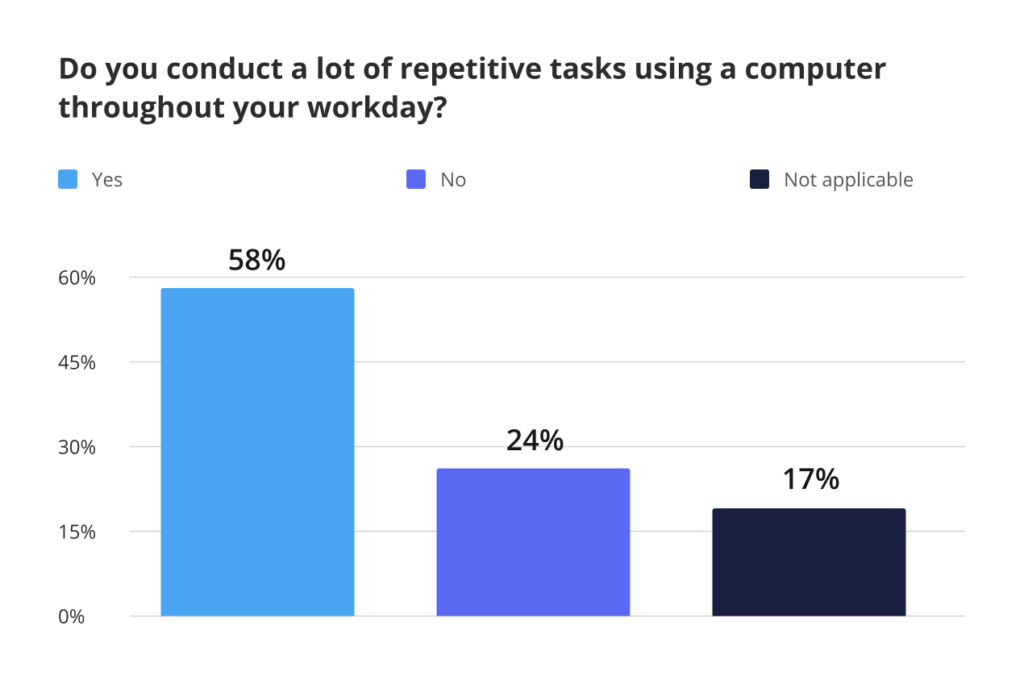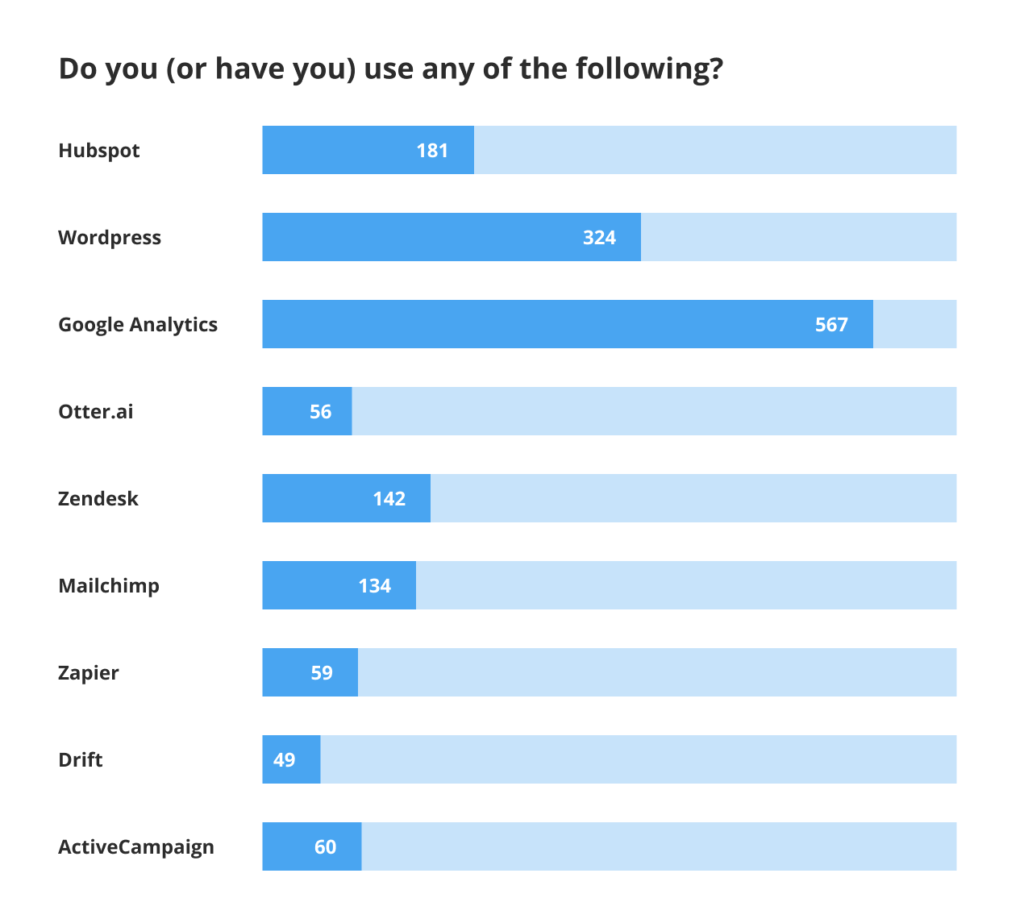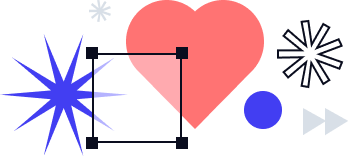Understanding the shifts in consumer awareness of low-code/no-code technologies

During the pandemic of 2020-2021 and post-pandemic of 2022, airSlate conducted a series of consumer surveys to gain insights into consumer awareness involving the adoption of eSignature, in-cloud collaboration, and overall digital adoption. Our latest consumer survey focused on the #1 technology trend of 2022 — low-code/no-code technologies.
Our team surveyed 600 randomly selected respondents, fairly represented across states, age, and income groups as well as gender. To date (and with more surveys in the near future), one thing we can state for sure: In the world of software solutions, consumers can do much more than they think.
In more sophisticated terms, we are observing a reverse Dunning-Kruger effect: people failing to realize that they have long been ready and are more than capable of using smarter software technologies.
Let’s have a look at the key takeaways.
Spoiler alert: There’s a high chance you’ll recognize your daily [home] office routine.
The state of low-code/no-code awareness
To see the full picture, we’ve intentionally asked a range of questions encompassing several overlapping knowledge areas — coding as such (in its very generalized understanding), low-code and no-code technology awareness, other business-related software solutions as well as several questions concerning repetitive tasks, and efficiency and functionality struggles at work.
We can observe from the beginning of the survey analysis that consumers across all age groups and professions are becoming more tech-savvy.
1. Shifting attitude to coding as a profession and a skill
68% of consumers do not know how to code (this number comes as no surprise, actually).

At the same time, almost half of the respondents (49%) are confident that coding is something they could easily learn if needed.

Moreover, over 45% of respondents anticipate that they will actually have to learn some form of coding in the near future:

No less interesting are the shares of two other answers to this question. People who do not plan to learn to code anytime soon and people unsure about the necessity of it combined make up over 55% of the total sample.
This sample size leads us to the second key takeaway — the role of no-code solutions.
2. No-code awareness is experiencing moderate growth, despite the obvious daily demand
When asked specifically about no-code and low-code technologies, only 8% confirmed that they fully understood what no-code is. Another 8% have some experience with low-code solutions. Interestingly, 18% are familiar with both. These samples may come off as disappointing at first approximation. However, they make up as many as 34% when combined, which ranks much higher than any of the other pre-pandemic surveys!

On the other hand, we’ve got answers about repetitive tasks — almost 60% of the respondents face repetitive, computer-dependent tasks on a daily basis.

Indirectly, this confirms our initial assumption about consumer awareness concerning one’s own business automation needs.
Taken together, takeaways one and two deliver an optimistic forecast:
The absolute majority of respondents acknowledge the problem of repetitive daily routines. Thus, almost half of the sample is inclined to solve this problem by acquiring coding skills. Noteworthy though, the other half of the sample is inclined to seek other, easier solutions that won’t require re-education and/or other sizable investments of time.
3. Consumer usage of software is becoming more sophisticated and versatile
For the airSlate Team, the most informative part of this survey was the results detailing software solutions currently in use by the respondents.

Major discovery here — almost everyone seems to be using Google Analytics!
Other significant no-code platforms included Hubspot, WordPress, and Mailchimp. Newer solutions, such as Otter and Drift, are quickly gaining traction too but will need some time to catch up.
These statistics are yet even more proof that due to working from home during the pandemic, many of us did indeed become much more tech-savvy and smarter in the choice of software solutions.
On top of this, airSlate also asked two more not-so-obvious questions.

Almost 70% of the surveyed respondents play computer games on a regular basis. Again, not a surprising result, considering the rather limited choice of hobbies during the pandemic.

Among them, almost 45% confirmed they do observe similarities between these computer games, their work, and other computer-related tasks.
On the one hand, we are witnessing a rapid expansion in the number of software tools in use. On the other — there is this gradually blurring border between business software and computer games, at least on the consumer level.
In a nutshell, this means that consumers are ready — technically, mentally, and emotionally — to embrace software use on a much larger scale. Thus, they will eventually be able to start automating daily operations independently from software vendors.
Final question and the major takeaway
After gradually leading respondents towards the idea of introducing automation into their daily tasks, we asked our final question (with multiple choices):
If you were able to create a “rule” on your computer that could automatically complete certain repetitive tasks, how would this impact your workday? (Please rank your responses from 1 to 4, 1 being the most impactful, 4 being the least impactful).
The answers were distributed as follows:

The consumer responses above turned out to be glaringly obvious — the demand for greater efficiency is the highest priority. Second goes the consumers’ desire to spend work time in a much more meaningful way (not on mundane tasks, that is). Improved functionality and errorless performance ranked just beneath meaningful tasks at work.
In short, people want to do more while working less. Luckily, airSlate is making this a reality.
*Data powered by Dynata (www.dynata.com), the world’s
largest first-party data and insights platform
